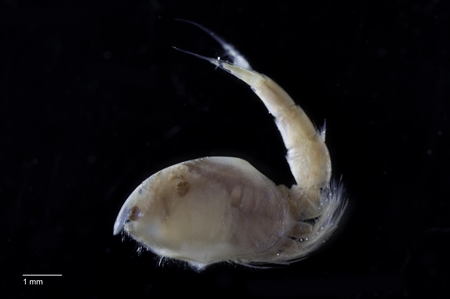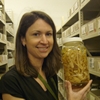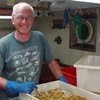General Description
Carapace laterally compressed forming a bivalve-like shell enclosing the bases of the legs; a hinged rostrum covering the eyes; abdomen tapering ending in a forked tail (caudal furca); with 7 abdominal segments. Males without swollen or heavily setose flagella on antenna 1. Colourless with bright red eyes. Up to 1 cm long
Biology
Flattened crustaceans with a hinged flap over the eyes and living in muddy environments are sea fleas, variously called phyllocarids, leptostracans or nebaliaceans, depending on what level in the crustacean hierarchy is being referred to. There are several types of crustaceans which jump like fleas but these are not what are referred to here. Leptostracans are never found out of sea water. This species, common in Port Phillip Bay, has been recognised as new but remains to be formally described.
Habitat
Low intertidal, to 22 m depth.
Soft substrates
Distribution guide
Southern temperate oceans, including south-eastern Australia.
Species Group
Microcrustaceans › Leptostracans
Depth
Shore (0-1 m)
Shallow (1-30 m)
Water Column
Max Size
1 cm
Diet
Organic matter
Commercial Species
No
Global Dispersal
Recorded in Australia
Species Code
sp. MoV 1666
Conservation Status
- DSE Advisory List : Not listed
- EPBC Act 1999 : Not listed
- IUCN Red List : Not listed





